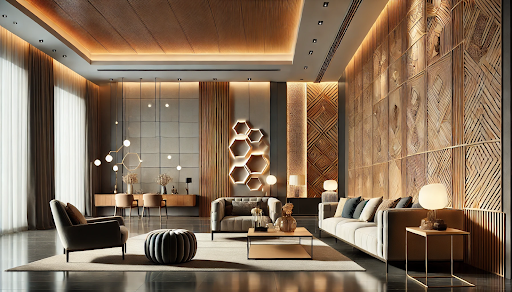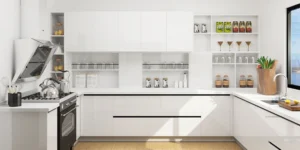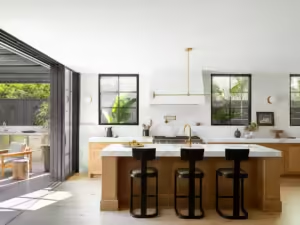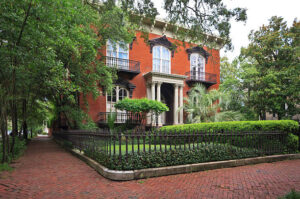Wainscoting Panels: A Timeless Touch to Elevate Your Home Design?

Wainscoting panels have become popular for homeowners seeking to add elegance and protection to their interior walls. This centuries-old architectural feature, originally intended to shield walls from scuffs and damage, has evolved into a sophisticated design element that blends functionality with aesthetic appeal. Wainscoting panels offer versatility and charm, whether you want to enhance a single room or transform an entire house. In this article, we’ll explore wainscoting panels, the different types available, and how you can incorporate them into your home for a stunning effect.
What Are Wainscoting Panels?
Wainscoting panels are wooden or synthetic materials applied to the lower portion of a wall, typically covering the bottom third or half. Historically, they were used to insulate rooms and protect walls from chair and furniture damage, but they have since gained popularity for their decorative capabilities. Wainscoting is commonly made from materials like wood, MDF (medium-density fiberboard), or PVC, providing a range of textures and finishes to suit various interior styles.
The placement of wainscoting panels on the lower half of the wall creates a visual balance and adds depth to any room, enhancing its overall look. Many interior designers use wainscoting to create a polished, traditional feel in homes, though modern interpretations allow for creative and contemporary designs.
Types of Wainscoting Panels
There are several styles of wainscoting panels, each bringing its distinct aesthetic to a room. Here are some of the most popular types:
- Raised Panel Wainscoting
Raised panel wainscoting is the most traditional form, often seen in older, classic homes. It features a raised, beveled panel in the middle of a frame, creating a three-dimensional effect. This type of wainscoting is ideal for formal dining rooms, living rooms, and entryways, adding a sense of grandeur and sophistication.
- Flat Panel Wainscoting
Flat panel wainscoting, recessed or shaker-style, is more straightforward and modern than raised panels. It features a flat, smooth panel set into a frame, giving a clean and understated look. Flat panel wainscoting is perfect for contemporary homes that value simplicity and minimalism while still wanting to maintain a touch of traditional craftsmanship.
- Beadboard Wainscoting
Beadboard is a popular wainscoting style that consists of narrow, vertical planks with grooves, or “beads,” running between them. Beadboard wainscoting is often associated with cottage or farmhouse styles, bringing a cozy and rustic feel to the room. It works well in bathrooms, kitchens, and hallways and can even be painted in light, airy colors to enhance a home’s warmth and comfort.
- Board and Batten Wainscoting
Board and batten wainscoting is a recent trend that features wide boards with narrow strips (battens) covering the seams between them. This style is commonly used in more modern or transitional homes, offering a sleek, structured look. It works exceptionally well in bedrooms, dining rooms, or open-plan spaces, adding texture and architectural interest.
- Overlay Wainscoting
Overlay wainscoting combines flat panels with additional trim pieces that are layered on top of the panel, creating a raised pattern. This gives the wall an intricate and sophisticated look, often found in high-end homes or spaces with a more elaborate design scheme. Depending on the overlay design, it’s a versatile option that can achieve both traditional and contemporary styles.
Benefits of Wainscoting Panels
Wainscoting panels provide a range of practical and aesthetic benefits, making them a valuable addition to any home. Here are some key advantages:
- Wall Protection
One of the primary functions of wainscoting is to protect walls from wear and tear. The lower portion of the wall is often more susceptible to damage from chairs, children, or pets, and wainscoting provides a barrier that absorbs the impact, keeping the walls beneath looking pristine.
- Increased Home Value
Wainscoting adds a touch of luxury to any space, giving the home a more refined and finished look. This architectural detail can boost the perceived value of your home, making it more attractive to potential buyers if you’re planning to sell. Homebuyers often appreciate the craftsmanship and timeless style that wainscoting panels provide.
- Customization and Flexibility
With various styles, materials, and colors available, wainscoting panels offer endless possibilities for customization. You can paint or stain the panels to match your existing décor or opt for pre-finished panels in various hues. Whether you prefer a traditional oak finish or a bold, modern look with vibrant colors, wainscoting can be tailored to suit any design preference.
- Improved Insulation and Soundproofing
Though less significant than modern insulation techniques, wainscoting can substantially improve a room’s thermal insulation. In addition, by absorbing sound waves, wainscoting helps reduce echo and noise within a room, making it an excellent choice for high-traffic areas like living rooms and dining rooms.
- Aesthetic Appeal
Wainscoting panels can completely transform a room’s appearance. They create visual interest by breaking up large, bare walls and adding texture, color, and architectural detail. Whether used in a formal setting or a casual space, wainscoting enhances the room’s overall ambiance and gives it a polished, professional finish.
How to Incorporate Wainscoting Panels into Your Home
Incorporating wainscoting panels into your home design can be an exciting and rewarding project. Here are some tips to help you get started:
- Choose the Right Style
Consider the style of your home when selecting wainscoting panels. If you live in a traditional or historic home, raised panel or beadboard wainscoting will likely best complement your space. Flat panel, board, and batten wainscoting for modern or minimalist homes offer a cleaner, sleeker look.
- Decide on the Height
Wainscoting panels typically cover the bottom third of the wall, but you can adjust the height based on your design goals. Taller wainscoting can add drama and elegance to formal rooms, while shorter panels provide a casual, laid-back feel. Some homeowners even install full-height wainscoting for a bold and distinctive statement.
- Select the Right Material
Wainscoting panels are available in wood, MDF, and synthetic materials like PVC. Solid wood panels are more expensive and luxurious but offer a timeless appeal. MDF is more affordable and more accessible to work with, making it a popular choice for DIY projects. PVC is an excellent option for high-moisture areas like bathrooms, as it is resistant to water damage.
- Coordinate with Your Color Scheme
Wainscoting can be painted or stained to match your room’s color scheme. Light colors like white or pastel shades can make a room feel larger and brighter, while darker tones create a more dramatic and intimate atmosphere. Beadboard wainscoting, for example, can be painted in a soft blue or pale yellow to give a room a cottage-style charm.
Conclusion
Wainscoting panels are a versatile and timeless design element that can add beauty and practicality to any home. From protecting your walls to increasing the value of your property, wainscoting offers a range of benefits that make it a worthwhile investment. With numerous styles to choose from, including raised panel, beadboard, and board and batten, there is a wainscoting design to suit every home and personal taste. By selecting the right type, material, and color, you can transform any space into a stunning, polished environment that reflects your style. Whether aiming for a traditional look or a modern twist, wainscoting panels are the perfect addition to enhance your home’s interior design.



